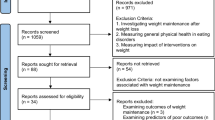Summary
BACKGROUND: Patients with cancer are characterized by a profound impairment of glucose utilization, with lipids being the preferred metabolic fuel. In contrast, the energy needs of malignant tumors are almost entirely met by glucose. We therefore studied the effects of a high-fat diet, particularly on body composition. PATIENTS AND METHODS: Twenty-three moderately malnourished patients with gastrointestinal carcinomas were randomized to receive either a conventional diet supplying 35 nonprotein kcal and 1.1 g of protein/kg per day (group A, n = 11) or a fat-enriched artificial liquid diet (20 nonprotein kcal/kg per day) plus normal meals (group B, n = 12) for a period of eight weeks, i.e., from the first to the third chemotherapy cycle. The fat content of the artificial diet was 66% of the nonprotein calories. The day before the nutritional interventions, and again after four and eight weeks, body compartments were determined using bioelectrical impedance analysis, lymphocyte subpopulations were quantified using flow cytometry, and some aspects of the quality of life were rated using four linear analog self-assessment (LASA) scales. The statistical calculations were done as an exploratory data analysis. RESULTS: The consumption of non-protein calories did not differ significantly between the two patient groups. An average weight gain in group B contrasted with an average weight loss in group A after four (P < 0.01) and eight weeks (P < 0.05). Fat-free mass showed an intergroup difference in favor of group B after eight weeks (P < 0.05). Body cell mass was maintained throughout the study in group B, but declined significantly up to weeks 4 and 8 in group A (intergroup difference: P < 0.05 and 0.01, respectively). A decrease in the total lymphocyte count by 559 cells/μl occurred with the fat-enriched diet (P < 0.05). Several aspects of the quality of life were rated to be better in group B than in group A, although not all differences reached statistical significance. CONCLUSION: In patients with cancer, a high-fat diet may possibly support the maintenance of both body weight and body cell mass. However, monitoring the lymphocyte count is advisable.
Zusammenfassung
HINTERGRUND: Karzinompatienten sind durch eine erhebliche Beeinträchtigung der Glukoseutilisation gekennzeichnet, wobei Fette die bevorzugte Energiequelle darstellen. Im Gegensatz dazu decken maligne Tumoren ihren Energiebedarf fast völlig durch Glukose. Deshalb untersuchten wir Auswirkungen einer fettreichen Ernährung besonders auf die Körperzusammensetzung. PATIENTEN UND METHODIK: 23 mäßig mangelernährte Patienten mit gastrointestinalen Karzinomen erhielten acht Wochen lang, nämlich vom ersten bis zum dritten Chemotherapiezyklus, randomisiert entweder eine konventionelle Kost mit 35 Nichteiweißkalorien und 1,1 g Protein/kg je Tag (Gruppe A, n = 11) oder eine mit Fett angereicherte künstliche Trinknahrung (20 Nichteiweißkalorien/kg je Tag) mit zusätzlichen normalen Mahlzeiten (Gruppe B, n = 12). Der Fettgehalt der Trinknahrung betrug 66 % der Nichteiweißkalorien. Am Tag vor Beginn der Ernährungsbehandlungen sowie nach vier und acht Wochen wurden die Körperkompartimente durch bioelektrische Impedanzanalyse, Lymphozytensubpopulationen durchflusszytometrisch und einige Aspekte der Lebensqualität mit Hilfe von vier linearen analogen Selbstbeurteilungsskalen quantifiziert. Die Wahrscheinlichkeitsstatistik bestand in einer explorativen Datenanalyse. ERGEBNISSE: Die Aufnahme von Nichteiweißkalorien war zwischen den Patientengruppen nicht signifikant unterschiedlich. Einer durchschnittlichen Gewichtszunahme in der Gruppe B stand nach vier (P < 0,01) und acht Wochen (P < 0,05) ein mittlerer Gewichtsverlust in der Gruppe A gegenüber. Die fettfreie Körpermasse differierte nach acht Wochen zugunsten der Gruppe B (P < 0,05). Die Körperzellmasse blieb in der Gruppe B während der ganzen Studiendauer erhalten, nahm aber in der Gruppe A bis zur vierten und achten Woche jeweils signifikant ab (Gruppenunterschied: P < 0,05 bzw. 0,01). Während der fettreichen Ernährung fiel eine Verringerung der Lymphozytenzahl um 559 Zellen/μl auf (P < 0,05). Die Bewertung der Lebensqualität brachte in der Gruppe B unter mehreren Aspekten bessere Ergebnisse als in der Gruppe A (P = 0,01–0,06). SCHLUSSFOLGERUNG: Bei Karzinompatienten fördert eine fettreiche Ernährung möglicher Weise die Erhaltung des Körpergewichts und der Körperzellmasse. Allerdings sollte dabei die Lymphozytenzahl kontrolliert werden
Similar content being viewed by others
Author information
Authors and Affiliations
Corresponding author
Rights and permissions
About this article
Cite this article
Breitkreutz, R., Tesdal, K., Jentschura, D. et al. Effects of a high-fat diet on body composition in cancer patients receiving chemotherapy: a randomized controlled study. Wien Klin Wochenschr 117, 685–692 (2005). https://doi.org/10.1007/s00508-005-0455-3
Received:
Accepted:
Issue Date:
DOI: https://doi.org/10.1007/s00508-005-0455-3




